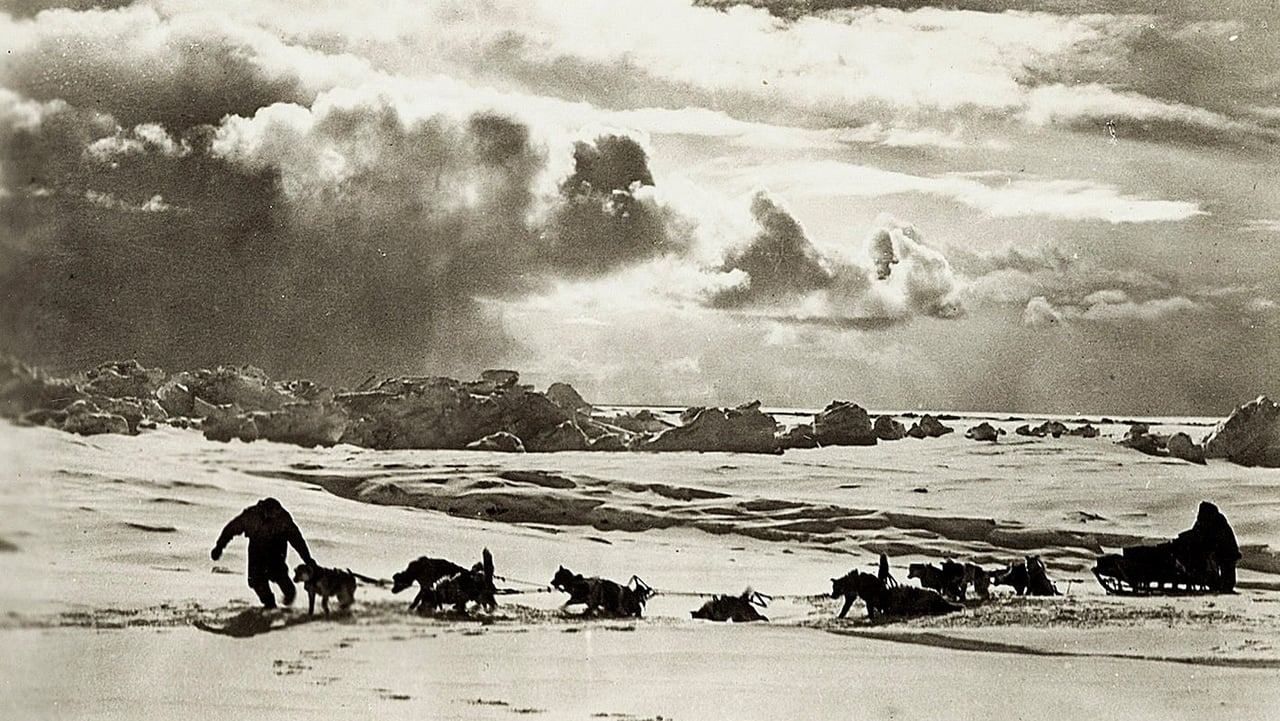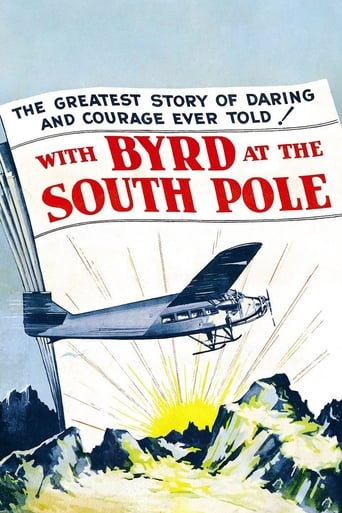

While it doesn't offer any answers, it both thrills and makes you think.
... View MoreThe thing I enjoyed most about the film is the fact that it doesn't shy away from being a super-sized-cliche;
... View MoreBlistering performances.
... View MoreThere is, somehow, an interesting story here, as well as some good acting. There are also some good scenes
... View MoreNarrated by Floyd Gibbons. Directed and photographed by JOSEPH T. RUCKER and WILLARD VAN DER VEER. Polar flight commentary narrated by Floyd Gibbons. Titles: Julian Johnson. Film editor: Emanuel Cohen. Music score: Manny Baer. Song, "Back Home", by Irving Kahal, Sammy Fain and Pierre Norman.Copyright 12 July 1930 by Paramount Publix Corp. New York opening at the Rialto, 19 June 1930. U.S. release: 28 June 1930. Sydney release at the Prince Edward, 24 October 1930 (ran 2 weeks). 8 reels. 7,411 feet. 82 minutes.SYNOPSIS: Documentary of Admiral Byrd's 1928-1930 polar expedition.NOTES: Academy Award for Cinematography (defeating one of the most impressive line-ups in the entire history of this Award: Arthur Edeson's All Quiet on the Western Front; William Daniels' Anna Christie, Tony Gaudio and Harry Perry's Hell's Angels and Victor Milner's The Love Parade).Voted into 7th position, in The Film Daily annual poll of U.S. film critics.COMMENT: A meticulous but slow-moving account of Byrd's expedition. True, the photography, doubtless executed under terrible conditions, has its moments of grandeur, but the film as a whole is too long, too repetitive, too static, too familiar to hold the interest of a present-day audience for 82 minutes.
... View MoreWith Byrd at the South Pole (1930) *** (out of 4) This documentary picked up a Best Cinematography Oscar and rightfully so as some of the shots are just downright breathtaking. The documentary covers the year-long journey of Rear Admiral Richard Byrd as he tracks down to the South Pole where he attempts to become the first person to fly over it. The documentary picks up as the ship leaves New York and we pretty much see their not so good life for the next year as they struggle to build up their shelters as well as having to deal with the low temperatures and of course actually building the plane to try and make it fly. I think history buffs are certainly going to get a kick out of seeing this footage as there's no question that it's pretty remarkable getting to see this historic event. The cinematography really puts you right there as there are some terrific shots of the wildlife and some footage showing how dangerous everything is. Just take a look at some of the shots during the two blizzards that are shown and you're really amazed that no one was killed. There's also quite a bit of humor added in the title cards (the film is silent) in regards to the low temperatures and there's a funny sequence where we see some spring cleaning and we get to see how they get a hot bath. The Aeriel footage is another major plus. The film starts off with a talking sequence with Byrd delivering a speech about his journey. This is probably the worst sequence because of how badly he struggles to read the cue cards. His eyes are constantly looking over to the cards and even worse is how he has to break sentences up to look over and see where to pick up again. Still, the actual images is what makes this film so special and worth viewing.
... View MoreA few nights ago, my wife and I found ourselves talking about family problems at 3am. Sleep seemed impossible, so we went to the TV to find a more soothing mood. And there, on TCM, we found "With Byrd at the South Pole. Byrd stood nervously before the camera, stiffly, nervously trying to communicate the scope and dangers of his mission. The nervousness was in stark contrast to his absolute sure-handed, calm planning and control in the most trying circumstances.We marveled at the thoroughness and foresight of his planning, his concern for the safety of his crew--no one died on the mission, despite blizzards, crevasses, 4 straight months of no sunlight,and icy , treacherous footing, with temperatures reaching -72 F.Most outstanding was the Oscar-winning cinematography, unself-consciously artistic and breathtaking. We often wonder, watching adventure films, how cameramen somehow manage to be on a mountain peak before the climbers, wrestling heavy, awkward burdens of cameras, film and tripods. In this documentary, the visual thrills are endless and revelatory.One of the most interesting aspects of the film is the quiet dignity, humanity and willing work of the 42 trekkers. There is no evidence of complaining,a quiet competency and absolute dedication to hard work.There is a moving episode as a lead dog, overcomes illness and infirmity in a heartbreaking attempt to stay with the sled dog teams.This film is less "dramatic" than Flaherty's epics, but totally involving in terms of our emotional involvement.Find this film gem if you can...it's unforgettable.
... View MoreA classic documentary in glorious black and white, the film is mostly silent, with a musical score added. There is a sound introduction by Byrd himself and a narrator describes the section showing the actual flight over the South Pole (though his narration is hurried). The film is beautifully photographed and won the Academy Award for cinematography in 1930. Helpfully, the print that I watched on Canadian TV was clear and crisp, making the film a visual treat to watch. I highly recommend this film over any newer versions of Byrd's story which would intercut the vintage film clips with modern material. This version gives a great feel for the immensity of the original expedition, with tidbits both momentous and minor.
... View More